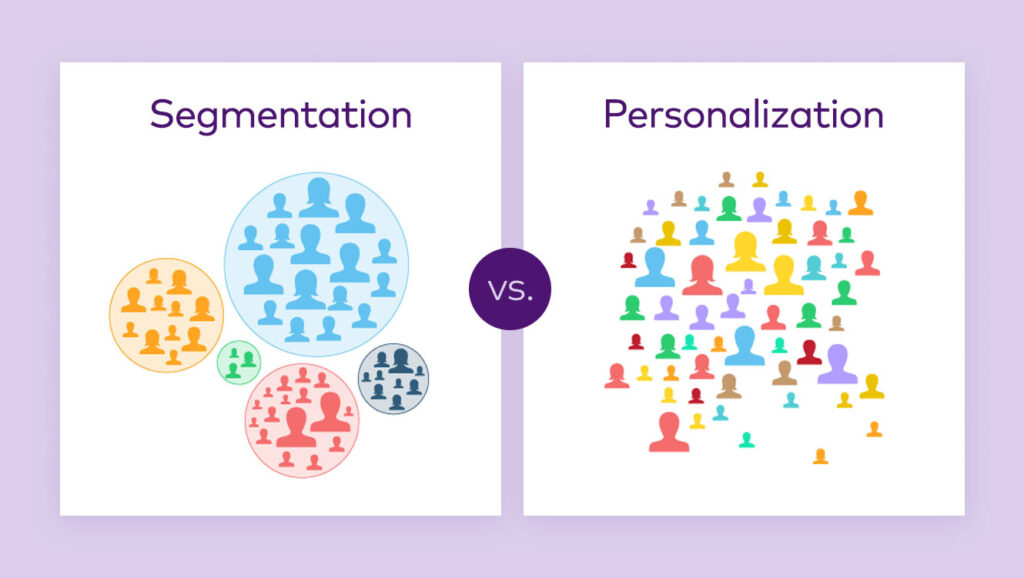In the evolving landscape of communication, voicemail technology is experiencing a significant transformation, largely driven by advancements in artificial intelligence (AI). While voicemail has been a staple of business and personal communication for decades, the integration of AI into voicemail systems is set to revolutionize how we manage, process, and interact with voice messages. With its ability to enhance efficiency, improve personalization, and streamline communication, AI is shaping the future of voicemail technology in ways that were once unimaginable.
AI-Powered Voice Recognition: Making Voicemails Smarter
One of the most impactful changes AI is bringing to voicemail technology is advanced voice recognition. Traditional voicemail systems rely on manual listening, which can be time-consuming and inefficient, especially for businesses with high call volumes. AI-driven voice recognition, however, allows voicemail systems to automatically transcribe messages, turning them into text that can be easily read and stored. This technology not only saves time but also ensures better accessibility and organization of messages, especially for people who prefer reading over listening.
In addition, AI’s ability to accurately identify and categorize messages is rapidly improving. For instance, AI can differentiate between important messages and routine inquiries, allowing users to prioritize their responses. This smart categorization also helps in managing voicemail boxes by reducing clutter and making it easier to find relevant messages.
Enhanced Personalization with AI
Another exciting development in AI-driven voicemail technology is its ability to personalize voicemail experiences. AI can analyze patterns in voice messages and automatically adjust voicemail greetings or content based on the caller’s behavior or preferences. This feature can be especially useful for businesses aiming to enhance customer experience by delivering tailored voicemail responses that feel more human and less robotic.
For example, businesses can create dynamic voicemail greetings that adapt to the time of day, specific customer profiles, or previous interactions. An AI system could greet a returning customer by name or reference their previous inquiry, creating a more personalized and engaging experience. This level of personalization not only builds stronger relationships with customers but also increases the likelihood of a positive response and better overall satisfaction.

Automated Call Routing and Intelligent Response
Incorporating AI into voicemail technology can also streamline call routing and automate responses. AI-powered voicemail systems can recognize the intent behind a caller’s message and automatically route the voicemail to the appropriate department or individual. This reduces the need for manual intervention and speeds up response times, improving overall operational efficiency.
Moreover, AI systems can be used to craft intelligent voicemail responses. Instead of relying on generic messages, businesses can use AI to generate personalized follow-ups or even direct answers to common inquiries. This is particularly beneficial for businesses that receive a high volume of repetitive inquiries, such as customer service or technical support calls. By reducing the need for human intervention in routine cases, AI allows teams to focus on more complex issues, ultimately improving productivity and customer satisfaction.
Voicebots: Revolutionizing Customer Interactions
AI-powered voicebots are another game-changer in the realm of voicemail technology. Voicebots, which use natural language processing (NLP) to understand and respond to voice inputs, are increasingly being integrated into voicemail systems. These intelligent bots can listen to voicemails, interpret them, and even engage with the caller in real-time without the need for human involvement.
For instance, a voicebot could listen to a voicemail message left by a customer and immediately provide them with an automated response or schedule a follow-up call. This instant action eliminates the delays that traditionally accompany voicemail systems and ensures that customers’ needs are addressed promptly. As voicebot technology continues to improve, it’s likely that voicemail systems will become fully automated, capable of handling a broader range of customer interactions with minimal human intervention.
Improving Accessibility with AI
AI’s role in improving accessibility is another crucial aspect of how it is transforming voicemail technology. For individuals with hearing impairments, traditional voicemail can be an obstacle to communication. However, AI-driven transcription services provide a solution by converting spoken messages into text that can be easily read. This is especially important in business environments where clear communication is key, and it ensures that everyone, regardless of their abilities, can stay connected.
Moreover, AI can be integrated with other accessibility tools, such as speech-to-text applications or voice assistants, to further enhance usability. As AI technology continues to evolve, it’s likely that voicemail systems will become even more inclusive, accommodating a wider range of communication needs.
Security and Fraud Prevention
AI is also playing a vital role in improving the security of voicemail systems. As voicemail becomes increasingly integrated with cloud-based services, the potential for security breaches grows. AI-powered systems can monitor voicemail activity and detect unusual patterns that may indicate fraudulent behavior or unauthorized access.
For example, AI can analyze the frequency and timing of voicemails to identify any irregularities that could suggest a hacking attempt or phishing scheme. By using machine learning algorithms, AI systems can flag these potential threats before they become significant issues, offering businesses an additional layer of protection against cybersecurity risks.
AI and Voicemail Analytics: Gaining Insights into Customer Behavior
AI-powered voicemail systems are not just changing the way we interact with messages—they’re also enabling businesses to gain valuable insights into customer behavior. With integrated analytics tools, AI can track key metrics such as response times, sentiment, and message engagement. This data can be used to refine marketing strategies, identify pain points in customer interactions, and ultimately improve the customer experience.
For example, AI can analyze the tone of customer voicemails to detect whether a caller is frustrated or satisfied, providing valuable feedback for customer service teams. By identifying patterns in voicemail content and frequency, businesses can gain a deeper understanding of their customers’ needs and preferences, which can then be used to personalize future communications.
Real-Time Voicemail Translation: Breaking Language Barriers
In today’s globalized world, businesses often face the challenge of communicating with customers in multiple languages. AI-driven voicemail systems are beginning to offer real-time voicemail translation, allowing businesses to overcome language barriers with ease. When a customer leaves a message in a foreign language, AI can instantly translate it into the preferred language of the recipient.
This feature is especially useful for international businesses with diverse customer bases. By automatically translating voicemail messages, businesses can ensure timely and accurate responses, regardless of the language spoken. AI translation tools are rapidly improving, making this feature more reliable and accessible to businesses of all sizes.

AI-Enhanced Call Analytics: Improving Customer Service Quality
AI’s capabilities in call analytics extend beyond voicemail transcription and translation. With advanced algorithms, AI can assess the quality of a voicemail message and provide actionable insights for customer service improvement. For instance, AI can evaluate whether a voicemail left by a customer includes all the necessary details, allowing customer service representatives to respond more effectively.
Additionally, AI can be used to track common issues raised in voicemails, which can be valuable for identifying trends or recurring problems. By leveraging these insights, businesses can improve their products, services, and overall customer experience. AI-enhanced call analytics not only improve voicemail management but also contribute to a more informed and responsive customer service strategy.
AI in Voicemail Integration: Seamless Synchronization Across Channels
As businesses continue to embrace omnichannel communication strategies, the ability to integrate voicemail with other communication platforms is becoming increasingly important. AI plays a key role in ensuring that voicemail systems synchronize seamlessly with email, chatbots, and customer relationship management (CRM) systems.
By integrating voicemail with other communication channels, businesses can offer a cohesive and consistent customer experience. For example, a voicemail left by a customer can be automatically logged in the CRM system, where it can be tracked and followed up on by the relevant team. AI ensures that no message is overlooked and that all customer interactions are accounted for, creating a more streamlined communication workflow.

The Impact of AI on Customer Retention: Building Long-Term Relationships
Ultimately, AI-powered voicemail technology is not just about improving operational efficiency; it’s also about building stronger, more personal relationships with customers. By personalizing voicemail messages, automating responses, and providing valuable insights into customer needs, AI helps businesses foster trust and loyalty.
In an age where customer expectations are higher than ever, businesses must go the extra mile to engage with their audience meaningfully. AI-driven voicemail systems enable businesses to do just that by ensuring that every interaction is thoughtful, timely, and relevant. As a result, businesses that adopt AI technology for their voicemail systems are better positioned to retain customers, drive satisfaction, and increase lifetime value.
Predictive Voicemail Technology: Anticipating Customer Needs
One of the most groundbreaking ways AI is transforming voicemail technology is through predictive capabilities. By analyzing past customer interactions, AI can anticipate when a customer is likely to leave a voicemail and what the nature of their inquiry might be. This allows businesses to be proactive rather than reactive, tailoring their responses even before the voicemail is received.
For example, if a customer has previously inquired about product availability or shipping status, AI can predict that similar questions may arise in the future. This can prompt the system to generate a custom voicemail greeting that addresses common issues or provides important updates, saving time for both the business and the customer. Predictive voicemail technology can streamline communication, making customer service more efficient and enhancing the overall customer experience.

AI-Powered Personalization: Making Every Message Feel Unique
AI’s ability to personalize voicemail content is another powerful advancement in this space. By utilizing customer data, such as previous interactions, preferences, and demographics, AI can craft tailored voicemail messages that resonate with the individual. Instead of a generic, automated message, customers receive a voicemail that feels personal and relevant to their specific situation.
Personalized voicemails can include details like the customer’s name, reference to past purchases, or customized recommendations. This level of personalization builds trust, enhances engagement, and improves the likelihood of a positive response. In an era where consumers expect individualized attention, AI-powered personalization is a key tool for businesses looking to differentiate themselves and foster deeper connections with their customers.
Scaling Customer Support with AI-Powered Voicemail Systems
As businesses grow, handling an increasing volume of voicemails can become a significant challenge. AI-powered voicemail systems enable businesses to scale their customer support without sacrificing quality or response time. AI automates voicemail management, ensuring that messages are transcribed, categorized, and routed to the appropriate departments for follow-up.
In addition, AI can help prioritize urgent inquiries and ensure that critical issues are addressed promptly. For example, if a voicemail contains keywords related to an urgent problem, the AI system can flag it as high priority, ensuring that customer service representatives address it as soon as possible. This level of efficiency allows businesses to manage larger volumes of customer interactions while maintaining high levels of service quality.

The Future of Voicemail Technology: What’s Next?
Looking ahead, AI will continue to push the boundaries of what voicemail technology can achieve. As AI becomes more advanced, voicemail systems will likely become even smarter, more intuitive, and more integrated into the broader digital communication ecosystem. The ability to predict and respond to customer needs with greater accuracy will help businesses stay competitive and foster stronger relationships with their customers.
In the future, we can expect to see AI-driven voicemail systems capable of fully understanding and responding to complex inquiries, handling an even wider variety of tasks, and offering seamless integration with other business tools and platforms. As AI technology matures, its role in shaping the future of communication will only grow more significant, making voicemail systems not just a tool for leaving messages, but a vital part of a business’s overall customer experience strategy.
Embracing the Future of Communication with AI-Enhanced Voicemail Technology
AI is undoubtedly revolutionizing voicemail technology, transforming it from a simple tool for recording messages into a powerful, dynamic component of modern communication strategies. With improvements in voice recognition, personalized experiences, automated responses, and enhanced security, AI-driven voicemail systems are setting a new standard for businesses looking to improve customer engagement, streamline operations, and enhance overall communication efficiency. As AI continues to evolve, so too will the possibilities for voicemail technology, creating new opportunities for businesses to connect with their customers in innovative ways.



Recent Comments